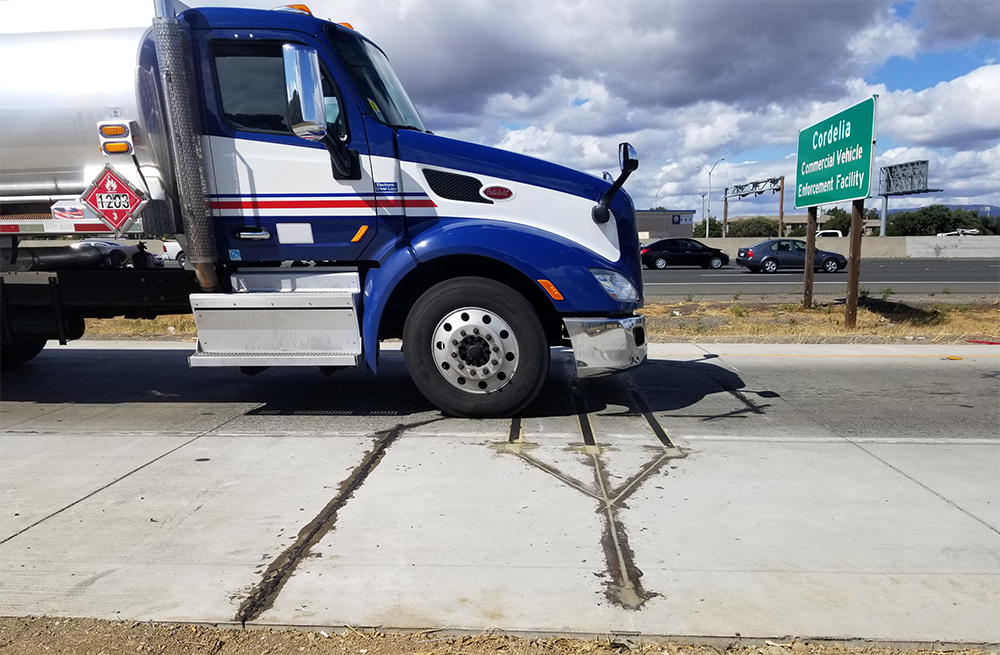
In the United States, multiple agencies have adopted TACS for commercial vehicle enforcement purposes. Installed in advance of weigh stations, TACS identifies trucks with conditions such as underinflated, flat, missing or mismatched tyres. Inspectors can reference a vehicle record showing the location of the suspect tyre on the vehicle and know exactly which tyre to examine. Fines may result, and vehicles with unsafe tyres can be placed out of service until the tyre problem is corrected. TACS has been very effective in this application and states have been successful in obtaining federal Innovative Technology Deployment (ITD) grants to add TACS to their E-screening systems.
In European systems so far deployed, the focus has been on informing the driver, by a connected message sign, when a potentially unsafe tyre, or inefficient tyre, is found by the system. There is an established relationship between underinflated tyres and reduced fuel efficiency, so the systems flag tyres running with low-pressure for efficiency/environmental reasons.
With so many systems deployed, TACS now screens millions of vehicles annually. Between 1 January and 31 October of this year, over 230,000 vehicles were flagged with tyre anomalies sufficiently severe to pose a safety hazard. Not only is TACS having a significant positive effect on road safety in jurisdictions where it is deployed, it is also demonstrating that there are many vehicles on the road that pose a safety hazard due to inadequate tyre maintenance.














